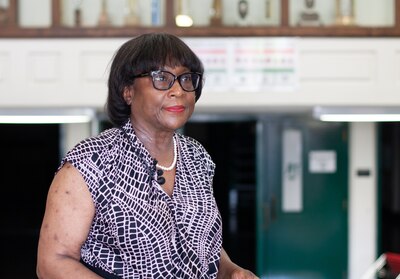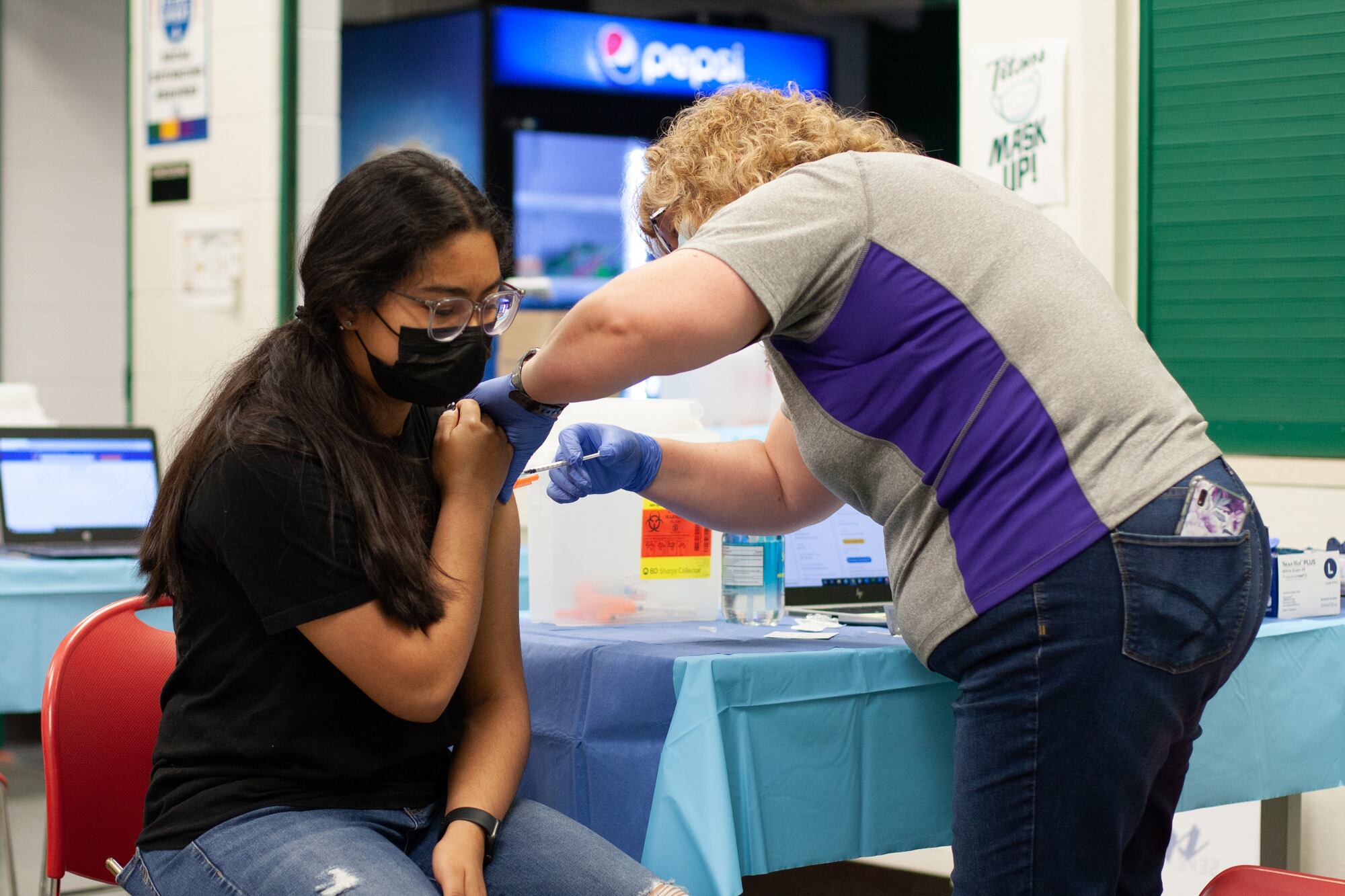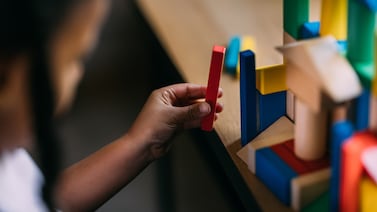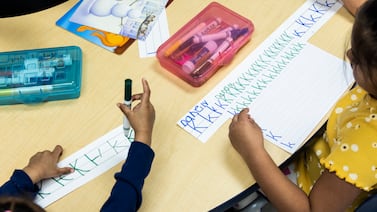After more than a year of the pandemic, Ebony Lee’s 14-year-old twins are itching to travel and go to the movies. On Saturday, they took a step toward being able to do so safely: They got their first COVID vaccine at a pop-up clinic at an Indianapolis high school concession stand.
But Lee, who teaches freshman English at Shortridge High School, worries her kids are in the minority — most of her students told her they don’t plan to get vaccinated.
“A lot of parents aren’t going to get the vaccine. I think the children are following suit,” Lee said. “It’s just not being educated, not trusting the medical system.”
Last fall, more than three-quarters of Shortridge students were Black or Latino. Lee said historic medical mistreatment of these communities has eroded trust in the COVID vaccine. Some students even make fun of people for getting the shot.
Marion County officials hope to ramp up vaccinations among 12- to 18-year-olds before the start of the school year to enable relaxed masking and social distancing restrictions. But lower vaccination rates among Black and Latino students pose a large concern.
Dr. Virginia Caine, director of the Marion County Public Health Department, said vaccine hesitancy worries her, especially because COVID vaccination rates for Black and Latino residents trail behind those of white residents — 10 and 16 percentage points lower, respectively, according to county data. The rate for Asian residents is also low.
“We have low rates of vaccination in the African American community,” Caine said. “I’m very concerned about that.”

As of Friday, just under 8% of 12- to 15-year-olds and 24% of 16- to 19-year-olds in the county were fully vaccinated, according to the county.
The proportion of vaccinated 12- to 18-year-olds will largely determine public health guidance for schools this fall, which Caine plans to release in late July. Caine said potential spread of the more contagious delta COVID variant will also play a role.
It’s unclear how many will need to be vaccinated to relax masking and social distancing restrictions in schools, but Caine has set a goal of 50% of all residents being vaccinated before completely removing COVID restrictions in the county.
By providing conveniently located, free pop-up clinics at schools, health officials hope to attract more students to get vaccinated. But while the Saturday clinic at Arsenal Technical High School targeted 12- to 17-year-olds, only about a third of the estimated 100 people who signed up belonged to that age group.
“I was expecting more,” said Madison Weintraut, the nurse epidemiologist in charge of the clinic. “But that’s fine — we celebrate any vaccines in arms we can get.”
The vaccination rate for 12- to 15-year-olds is the lowest of all age groups because they became eligible for one out of three vaccines just over a month ago. Despite the low turnout at Saturday’s clinic, Caine said the number of kids who have gotten shots so far tracks with what she expected, and she’s confident those numbers will rise in the coming weeks.
Aleida Lopez brought her 15-year-old son Diego Hughes, a rising sophomore attending Shortridge this fall, to the clinic Saturday. While Hughes didn’t feel strongly about getting the vaccine, his mom wanted him to, hoping it would help him regain a more social school experience.
“It’ll be good for them to have that interaction, because they need that in school,” Lopez said. “Being far away, you can’t talk or make friends.”
Lopez said she has seen vaccine hesitancy among her friends and family. Whenever it comes up in conversation, she explains why the vaccine is important and safe.
“People are just ignorant and skeptical about vaccines,” Lopez said. “Especially the Hispanic community, they are really skeptical.”
Lopez said she pushed her family members to get vaccinated, setting up all their vaccination appointments and texting them locations so they knew where to go.
Daraly Perea, 13, said she feels safer after getting vaccinated at the clinic. Last year, a lot of students at her school, James Whitcomb Riley School 43, didn’t wear masks nor stay 6 feet apart, and she often worried about getting sick. She hopes guidelines will relax this fall so she can play volleyball without social distancing.
“I haven’t seen my friends in a long time,” Perea said. “I miss spending time with them and spending time playing.”




